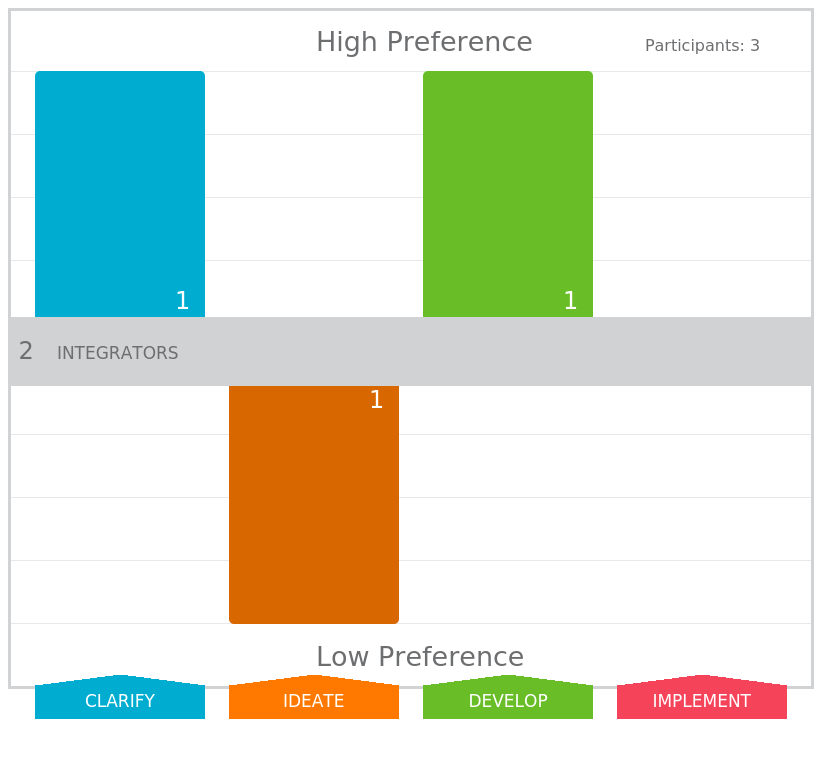The Cognitive Commute: How Thinking Styles Influence Career Choices
Posted on December 29, 2017

A recent study on health and wellbeing reported a surprising discovery: People with the longest commutes have the lowest life satisfaction.
Most of us think of a commute as the physical distance between home and work. But what if a commute also includes the mental distance we have to travel from our cognitive “home base” to work?
New research from FourSight suggests this may be the case.
An upcoming article in the Journal of Creative Behavior, examines the fit between occupations and thinking styles. Based on more than 22,000 cognitive profiles in the FourSight database, the researchers found some distinct correlations. For instance, the field of finance seems to attract people who have a high preference for clarifying facts. Advertising seems to attract people who prefer idea generation. IT seems to attract people who prefer solution development. And salespeople as a group prefer to implement action.
It’s tempting to think, “Great! I’ll pick my career based on my FourSight profile.”
Don’t rush into it. First look more deeply into why certain profiles match certain jobs. It’s not because jobs require certain thinking preferences. It’s because jobs require certain cognitive skills.
For instance, finance requires a lot of meticulous data gathering and analysis. Those are clarifying skills. You don’t have to be a clarifier to do them, but high clarifiers can do them hour after hour, day after day, and generally enjoy the work. Advertising, by contrast, depends on idea generation. It doesn’t take a high Ideator to come up with a great ad campaign, but over time, the constant demand for new ideas might feel stressful and exhausting to someone with a low preference for ideating.
Every occupation has its own cognitive complexion. And without knowing it, most of us gravitate toward jobs that call on our cognitive preferences. Constantly working outside of one’s cognitive preference can be stressful and draining, like a long commute.
The chart below reflects the FourSight scores of nearly 2,000 people who work in finance. Collectively, they show a distinct preference for clarifying and developing. If you assume that people are attracted to work that suits their thinking styles and plot the results as a pie chart, you can get a sense of the cognitive demands of the finance profession. Again, clarifying and developing skills appear to dominate in this profession. Ideating skills are scarcely required.
Cognitive Preferences in Finance: 2 Views
By contrast, the chart below shows FourSight scores of people in advertising. Here, the highest preference is for ideating, and ideating skills predominate in the pie chart as well.
Cognitive Preferences in Advertising: 2 Views
If you’re facing a career choice, it pays to know your cognitive preference. It can point to you toward a career that feels like a fit. If you’re a high Ideator weighing the options between pursuing a career in advertising and finance, understanding the cognitive difference in those occupations can help you make a more informed decision.
You wouldn’t pick a job solely based on your FourSight profile any more than you would pick a job solely based on the physical commute. But it is an important factor. In the end, choosing a shorter cognitive commute may just improve your health and wellbeing.
Sarah is managing partner at FourSight and the award-winning author of Good Team, Bad Team, The Secret of the Highly Creative Thinker, Creativity Unbound, and Facilitation: A Door to Creative Leadership. Her work helps teams and leaders think creatively, work collaboratively and perform at their best.
Ready to learn more about FourSight?
Contact us today to learn more about our offer and how FourSight can help your teams work better together.
If you'd like to learn more about FourSight before scheduling a call, click below to learn about our platform and the science behind FourSight.

